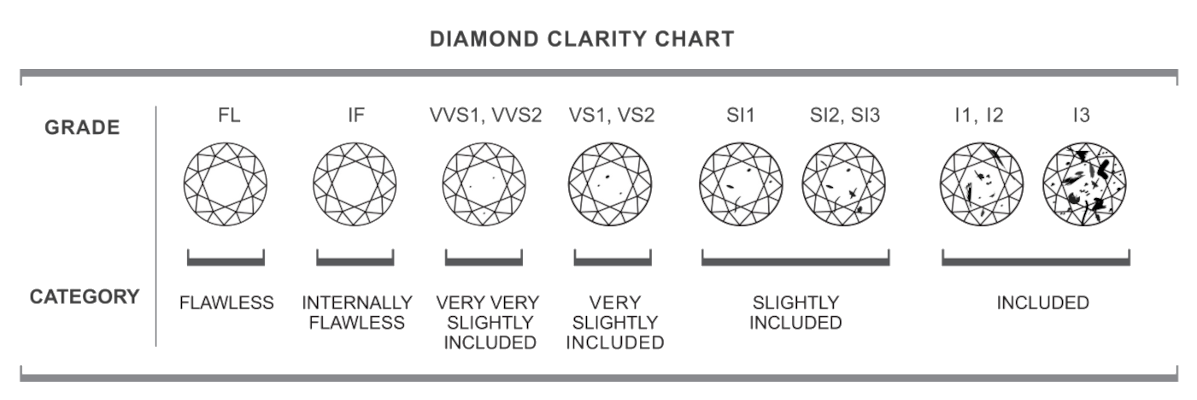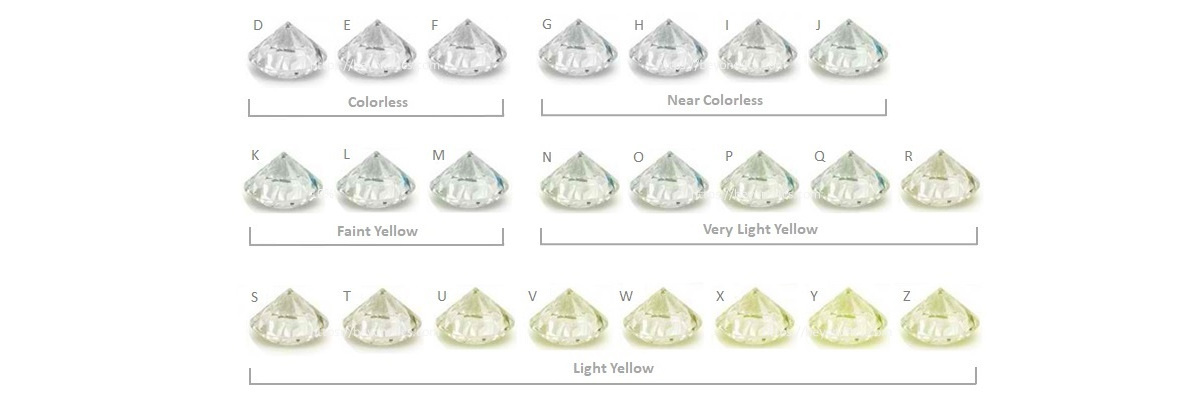Geen verzendkosten, gratis thuis bezorgd. WhatsApp 06-82420335

Diamond a beautiful clear stone, a unique product from nature. Diamond in its most famous shape and color is clear white and brilliant cut. But diamond comes in many colors and sometimes it is not clear at all.

Diamond is most common in a cloudy opaque form, which is often used for industrial purposes such as sandpaper, drilling and milling. But sometimes there are also beautiful colors that are used as natural diamonds in jewelry. Such as the Roos brand and the Nous series from R&C.
The most famous diamond is the white clear diamond, but how white is white? And clear diamonds also contain impurities. Pieces of cloudy diamond, all original and from nature. But less pure. That is why a classification has been made consisting of 4 C's. These are Carat, Cut, Clarity and Color in English. What contents:
- Weight ( Carat )
- Grinding shape ( Cut )
- Clarity (Clarity)
- Color (Color)
Weight
The weight of a diamond is expressed in carats. One carat is equivalent to 200 milligrams. One carat is divided into 100 points, making it possible to accurately represent the diamond to the hundredth milligram.

The weight also determines the size of the diamond, but the cut quality is also important. Not every stone with a diameter of 3 mm has the same weight, the cut and the height are also decisive.
Grinding shape
The most famous cut is brilliant, a round shape with 57 facets. But there are also many other cuts such as princess, pear, cushion, emerald, triangle, oval and, for example, a heart shape.

Sharpening the point at the bottom of the stone was not possible for a long time with small stones, so the so-called rose cut was first widely used, with flat diamond slices on one side provided with facets and on the other side was flat. These stones were then processed on a silver foil that provided the reflection. The Roos brand still processes these diamonds in a modern way without silver foil.
With larger stones it first became possible to sharpen a point, but the proportions were not yet fixed in a cut. We call these stones Bolshevik cut. The predecessor of the brilliant cut.
Brightness
Clear diamonds naturally have tiny impurities that have entered the stone during the formation of the stone. These impurities are called inclusions and they come in various sizes and quantities. For example, a stone can be very pure, but have 1 somewhat larger inclusions that are visible to the naked eye, or more very small ones that are hardly visible to the eye. Or no inclusions at all.
The purity is classified in codes:

Colour
Clear diamonds come in various colours, the so-called fancy colors pink, blue, yellow and green are very rare. Clear brown or light brown (champagne) is more common and the color scale runs from brown through light yellow to white. The latter colors are divided into letter codes, whereby in our collection we mostly work with colors E to H

Certificates
Stones from approx. 0.30ct can be delivered with a certificate, there are 2 companies that issue certificates GIA and HRD. These companies then assess a stone without jewelry around it. Laser a number into the stone and provide a certificate in which the stone has been assessed on the 4C's. Jewelry with certified stones is more expensive, because there are costs associated with certification.
We work with suppliers who can supply jewelry with certified stones. And some jewelry with larger stones in our collection also have such a certificate.
In addition, we also rely on the usually long-standing cooperation with suppliers and their expertise, and we buy jewelry with smaller stones without a certificate, a piece of jewelry without a certificate is cheaper.
Kimberly Process
We select our suppliers based on their objectives in terms of sustainability and improvement of the diamond supply process. The guidelines of the Kimberly Partnership are the basis for this, but most of our suppliers strive for higher values. For example, by reusing or re-sharpening diamonds that are already in circulation.
https://www.kimberleyprocess.com/